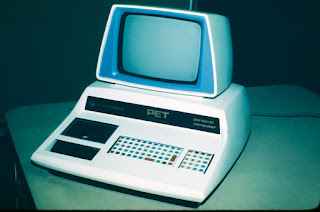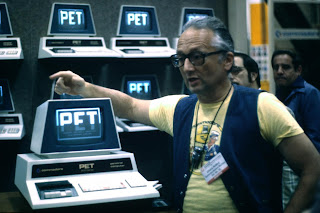Intro to PET

by Neil Harris It was March of 1978 and I was in love. We had been dating for a year, and it was time to get serious. I knew that because she told me so. “I won’t marry you until you get yourself on a career path.” I was young and directionless until that point. I had learned to program computers in high school and had spent every free moment there writing games and other programs. But programming for a living seemed boring, so when I went on to college I did not study computer science and, before long, had dropped out. I worked odd jobs – driving a taxi, working in a drugstore, even as an ice cream man one summer. I did work as a programmer for a while, for a small company that wrote accounting software for local businesses – and it was as boring as I expected. But I was in love. So, I got a proper haircut and a new suit and checked the want ads in the newspaper. One ad caught my eye right away: “Sales help wanted for calculator and home computer store. Mr. Calculator, 1700 Sanso...








